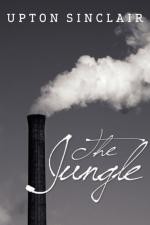|
This section contains 10,682 words (approx. 36 pages at 300 words per page) |

|
SOURCE: Wade, Louise Carroll. “The Problem with Classroom Use of Upton Sinclair's The Jungle.” American Studies 32, no. 2 (fall 1991): 79-101.
In the following essay, Wade exposes evidence of Sinclair's misleading portrait of the area he called “Packingtown” in The Jungle, claiming that Sinclair overlooked many social and cultural facts.
There is no doubt that The Jungle helped shape American political history. Sinclair wrote it to call attention to the plight of Chicago packinghouse workers who had just lost a strike against the Beef Trust. The novel appeared in February 1906, was shrewdly promoted by both author and publisher, and quickly became a best seller. Its socialist message, however, was lost in the uproar over the relatively brief but nauseatingly graphic descriptions of packinghouse “crimes” and “swindles.”1 The public's visceral reaction led Senator Albert Beveridge of Indiana to call for more extensive federal regulation of meat packing and forced Congress to...
|
This section contains 10,682 words (approx. 36 pages at 300 words per page) |

|


